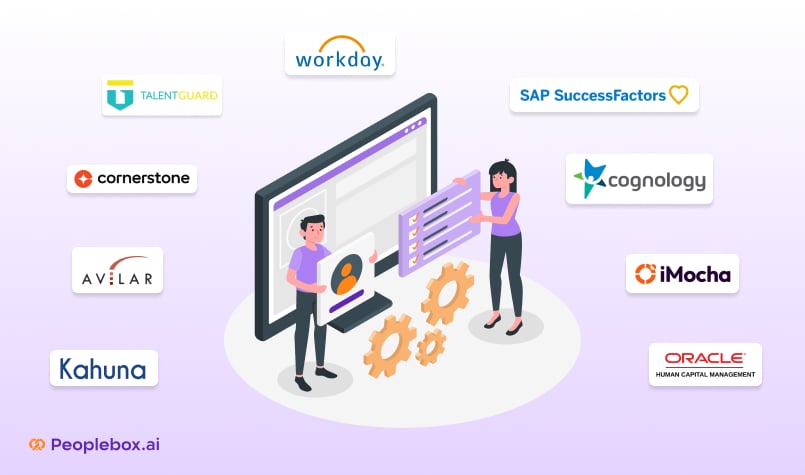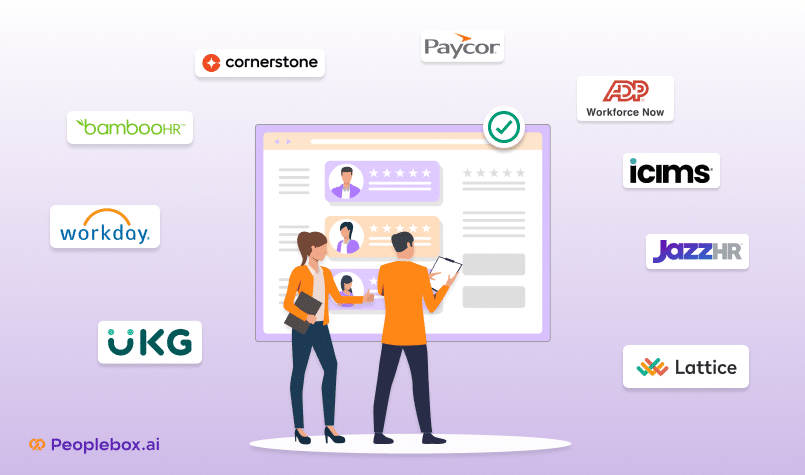Outbound recruiting has been the go-to option for many recruiters. Even though inbound recruiting has become so popular, companies are still investing in strong outbound recruiting strategies.
The question isn’t about which one is better. It’s using both in tandem to get the best results.
But how do you conduct effective outreach to encourage candidates to apply for open roles? How do you effectively generate referrals?
We answer all these questions and more in this guide to outbound recruiting. Whether you’re looking for best practices or real-life examples, we have everything to help you set up or optimize your outbound recruiting strategy.
What is Outbound Recruiting?
Outbound recruiting involves proactively reaching out to ideal candidates who would be the right fit for specific roles in your company. It’s similar to cold-calling or sending a cold email sales pitch.
It can be broken down into three stages:
- Making potential candidates aware of the company or open role
- Generating interest so they apply
- Persuading them to accept the job offer
Outbound recruiting is generally known to bring quick results, as you don’t wait for employees to reach out to you.
The New Era of Outbound Recruiting
While we have recovered a little from “The Great Resignation,” the U.S. Chamber of Commerce suggests we are stuck in “The Great Reshuffle.” It suggests that the quit rates are still high, but hiring rates continue to outpace them. The demand for skilled workers in many industries remains high.
Reports prove the same. 75% of employers cannot find qualified candidates to fill job vacancies.
This means recruiters need to adopt new approaches to outbound recruiting to beat the competition. Here are three common trends we are seeing.
- Data-driven approaches are becoming the norm using powerful technology. For example, AI tools to screen resumes based on select criteria.
- Use of multi-channel outreach to reach potential candidates across different platforms.
- Focus on engagement strategies to build relationships instead of one-time communication.
9 Strategies to Run a Successful Outbound Recruitment Campaign
Now that we know the basics of outbound recruiting and some new trends, here’s a detailed breakdown of 9 best practices and how you can implement them.
1. Source the Right Candidates
The first principle of cold emailing is getting the target audience right. The same applies to outbound recruiting. You can’t reach out to irrelevant candidates and then frown upon a low application completion rate.
Here are three ways to find the right candidates.
- Use LinkedIn. If you’re hiring for a software developer role, input that title in the search bar. Go to the “People” option and narrow down results with filters like location, industry, and past companies.
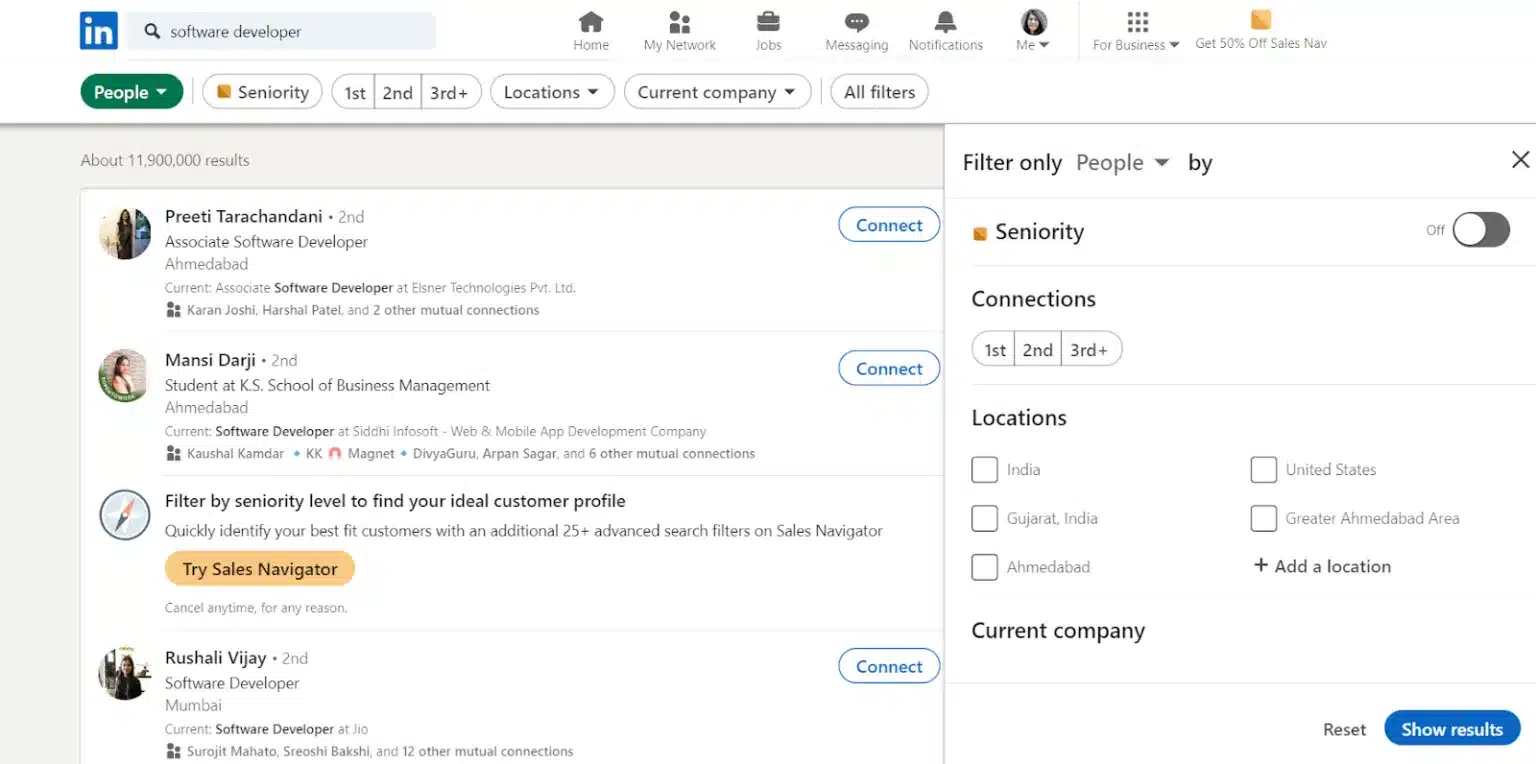
- Use industry forums or community-driven websites like Reddit and Quora. For example, here’s a subreddit for developers with 23K followers. You can go through the threads and find people you can contact.
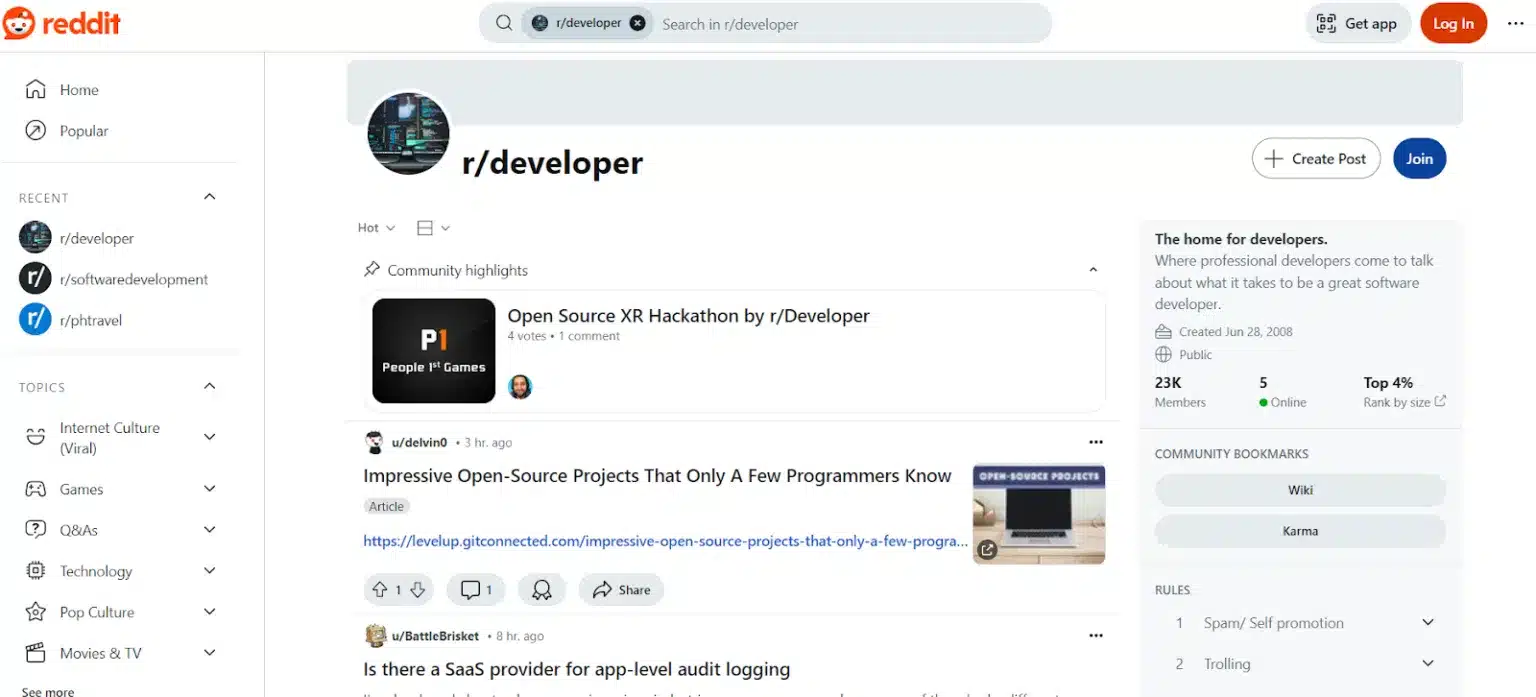
- Use freelancer platforms to find temporary, project-based, or freelance employees. For example, you can find freelance developers on Fiverr, Freelancer, and Toptal.

Once you have a list of candidates, you can get their email addresses using tools like Hunter and Snov.
Pro-tip: Find ways to interact with your ideal candidates before you send them the first email. For example, connecting with them on LinkedIn through a personalized invite.
2. Personalize Outreach
Before you start with outreach, build an ideal candidate persona. This could include details like designation, skills and qualifications, career goals, and motivations. Using this data, you can personalize outreach.
If you’re hiring for a niche role and thus reaching a select few candidates, go through their public profiles like LinkedIn to gather more details. For example, you can refer to their past experience and talk about how it fits the job description you’re hiring for.
Suggested Read: Your go-to Guide to Job Description and Specification [+template]
This will make the candidate feel like you actually took time to research about them.
Here’s a sample email you can take inspiration from.
Subject Line: Amanda, loved your blog—let’s chat!
Hi Amanda!
I’m Jacob, working with Sarah, our Marketing Director at XYZ Media, and we’re looking for standout content writers like you to join our growing team. I went through your LinkedIn posts and read your blog on SEO best practices, and Sarah was just as impressed as I was—your blend of technical SEO and engaging storytelling is exactly what we need!
We’re a fast-growing content platform helping small businesses thrive, and we’re excited to bring in new voices as we scale. Our team is small but mighty, and you’d have the freedom to own your projects and shape our content strategy.
Would you be open to a quick call this week? I’d love to learn more about your writing journey and share what we’re building here.
Looking forward to connecting!
Jacob Adams
Recruiting Manager, XYZ Media
3. Adhere to Outreach Best Practices
Getting your outreach right may take some time, but it can be the key to a good response and application fill rate.
Here are five best practices we see being adopted in outreach emails.
- Highlight what’s in it for them. For example, exciting projects or growth potential.
- Keep the first email short and engaging. Let them respond first before bombarding them with a detailed job description.
- Use a conversational tone. Avoid overly formal language. They do not want to feel that it’s an AI-generated email.
- Personalize the subject line to increase open rates.
- Include a clear call to action. For example, a link for scheduling a call.
4. Leverage Technology
Whether you want to create job postings or automate your outbound recruiting efforts, tools are available to help. They can help save time, reduce manual errors, and let you work on more high-value activities.
Here are a few examples of tools you can adopt.
- AI sourcing software: hireEZ helps aggregate candidate profiles from across the web, like LinkedIn, GitHub, etc.

- AI resume screening software: Peoplebox’s resume screening tool provides detailed candidate profiles with strengths, gaps, and scores for quick shortlisting.
The Ultimate Guide to AI in Recruitment

- Email outreach automation: Gem lets you create and send personalized outreach at scale and get detailed analytics for email sequences.
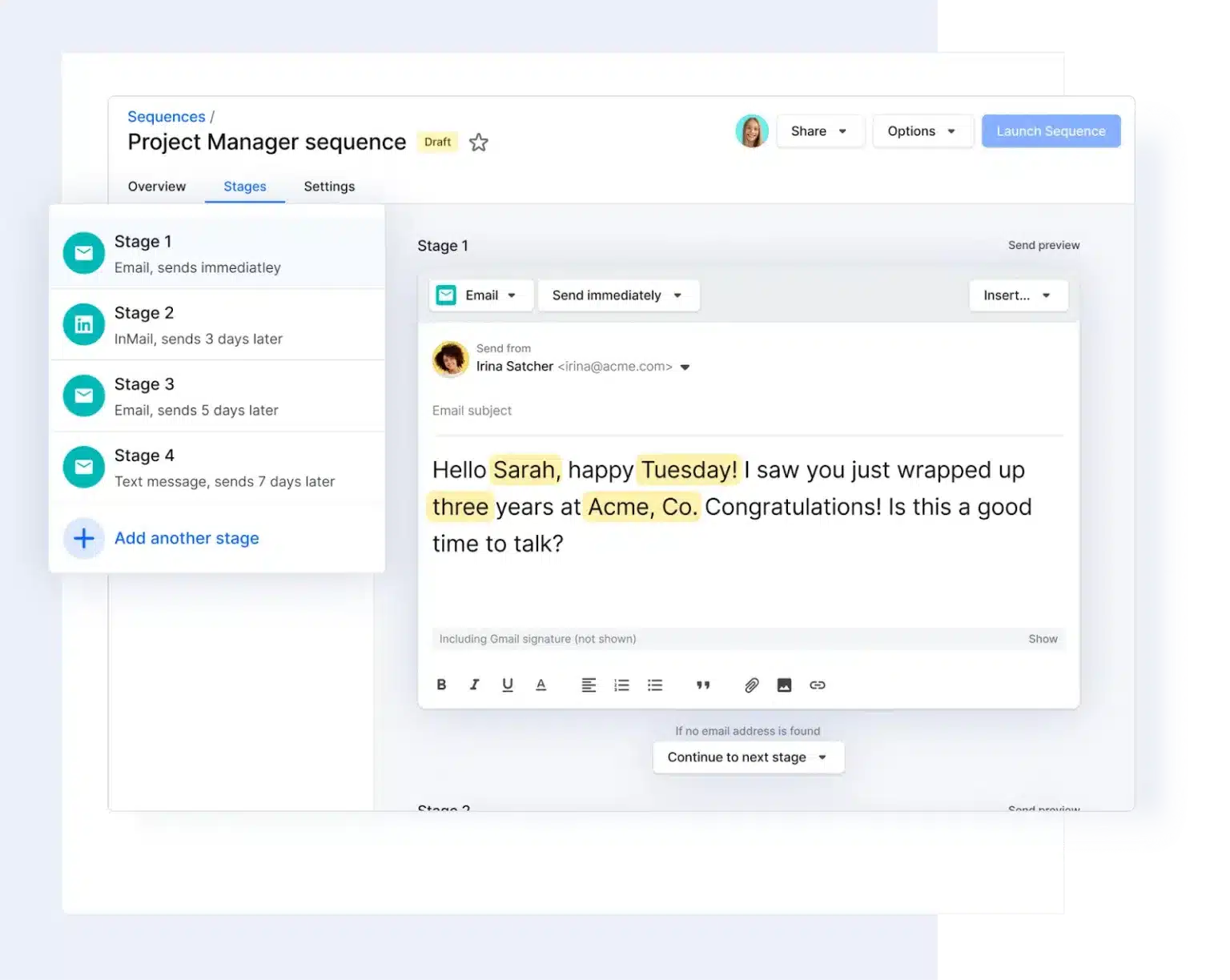
- Lead information software: With tools like Lusha, you can find information on candidates, such as their email and contact number.
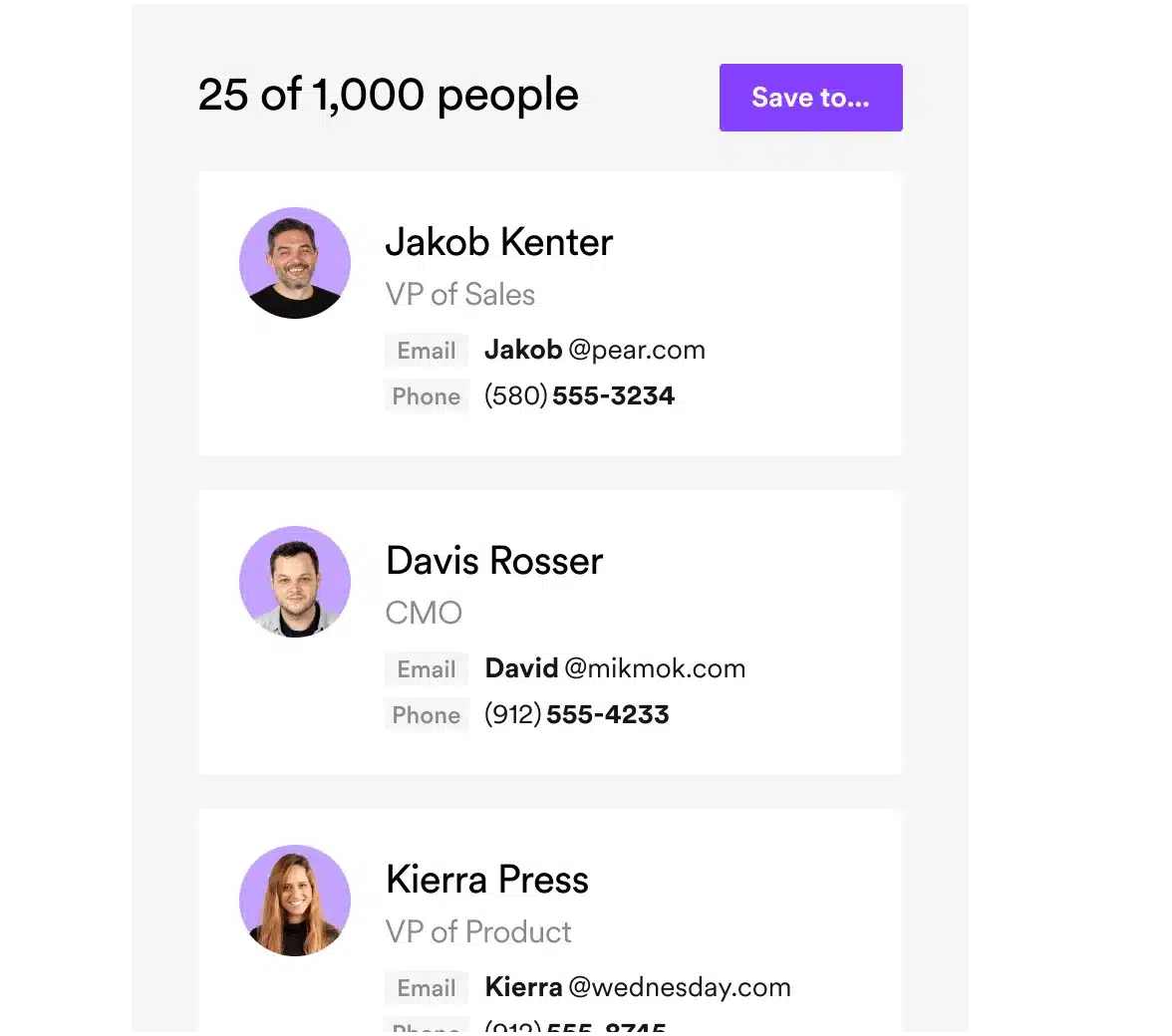
5. Focus on Employer Branding
While this is a key inbound recruiting strategy, it has multifold benefits for outbound recruitment as well. It directly impacts how potential employees perceive your company.
For example, you can talk about the company’s values or culture while moving the candidates through the next stage. This could mean sharing content that showcases company culture –
“We have a culture of continuous learning. Every quarter our team participates in workshops at beautiful locations to grow our skills, have fun, and innovate together.”
Or linking employee stories in your messaging –
“Hear from our Software Engineer, Lucy, who joined us last year. She shares how she quickly advanced her career while working on cutting-edge AI projects.”
This will give active job seekers an extra push to apply to your open positions.
6. Nurture and Engage Candidates
You might contact many passive candidates who are not ready to make an immediate move but would be a great fit for your organization. By engaging these candidates, you can help build trust and keep them interested.
One way to do that is by offering value. For example, if you have courses relevant to their field, share free access. This builds a reputation that you are a company that invests in talent development, even before someone joins.
Another way is to connect with them on social media. Interact with their posts or content and leave genuine comments.
If you have a significant budget, you can even hold informal events to invite candidates to interact with your team and learn what it’s like to work at your company.
Also read: 15 Best Employee Engagement Tools in 2024
7. Don’t Avoid Follow-Ups
According to research from a team member at Woodpecker, a cold email software, “I learned that if you don’t follow up on your opening email, you can reach a 9% reply rate on average. However, if you add at least one follow-up message to your email sequence, your average reply rate goes around 13%. I have observed the first follow-up email is naturally the most effective. It brings the highest reply rate — even about 40% higher compared to the initial email. Definitely worth the effort.”
This is true for recruiting and not just marketing. Sometimes, candidates may miss the first email. Or they may even be interested, but the email slipped their notice.
So, how do you follow up?
- Mention the last touchpoint.
- Offer additional lucrative details about the role or the company
- Express your interest in the candidate and why the role would be a good fit for them
- End with a CTA
8. Utilize Employee Networks and Referrals
People already working at your organization know the culture, values, and preferred type of candidates. Getting referrals from these employees could bring forth not just top talent but also candidates who can easily blend into your organization’s culture.
You can start an employee referral program incentivizing employees to refer candidates for an open role. For example, you could offer a bonus each time a successful hire is made through a referral.
We love Atlassian’s collaborative approach to employee referrals. Instead of individual incentives, they reward entire teams for hires made through collective efforts. This approach encourages employees to support each other in bringing the best candidates forward.
9. Use Data to Continuously Optimize Strategies
To understand if your outbound recruiting efforts are getting the desired results, you need to track several metrics.
For example, is the response rate high? How many candidates are reaching the last stage of the application? How much is the time to hire?
Use this data to determine how to optimize each stage of outbound recruiting. If you see a dip in response rates, you might want to work on your outreach messaging or nail your target audience.
From Strategy to Action: Implement a Successful Outbound Recruiting Plan
Getting passive job seekers interested in your job opening is the main goal of many recruiters adopting outbound recruiting. While it may take time to lay the groundwork, you can quickly attract qualified candidates and get them interested in your openings.
Before you get started, equip your team with the right tools. This will automate manual activities like screening resumes, creating email sequences, and analyzing data.
Try our AI resume screening software to reduce your applicant review time by 90%.

